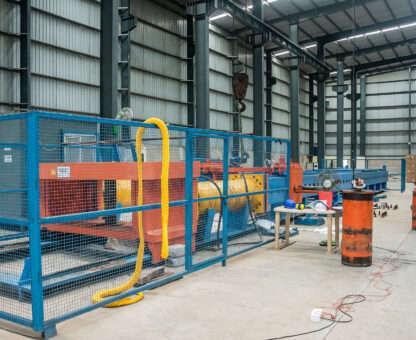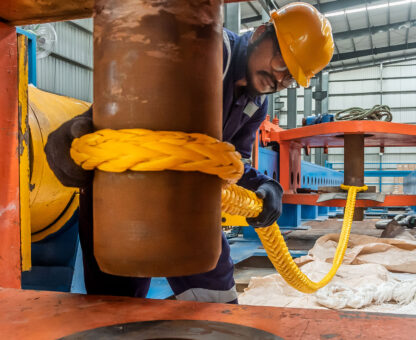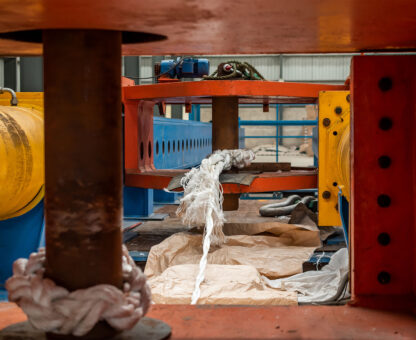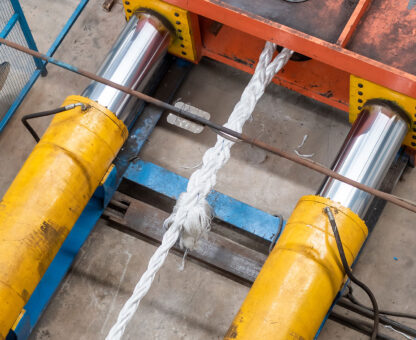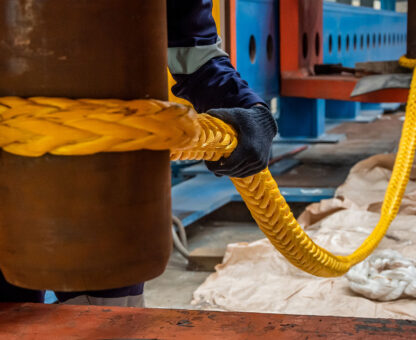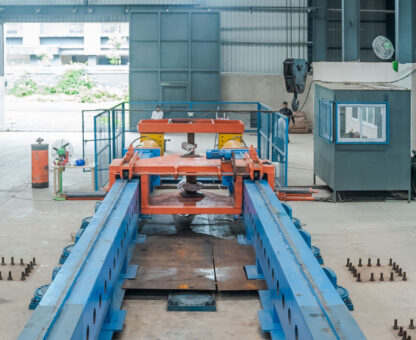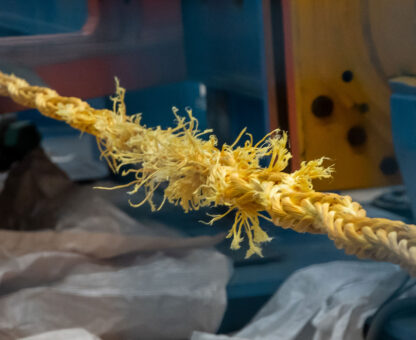The Vital Role of Proof and Break Load Testing for Lifting Equipment Safety
The Importance of Proof and Break Load Testing in Lifting Operations
In industries like construction, shipping, and manufacturing, ensuring the safety and functionality of lifting equipment is a top priority. Whether lifting small loads or handling massive structures, equipment failure can lead to serious safety risks, downtime, and financial losses. Two vital testing methods that ensure safety and operational efficiency are proof load testing and break load testing, both of which verify the integrity and performance of lifting appliances and rigging gear.
What is Proof Load Testing?
Proof load testing is a non-destructive test in which a load—typically 1.25 times the rated capacity of the equipment—is applied to verify that the lifting gear can withstand its safe working load (SWL) without undergoing permanent deformation. This is an essential process in certifying the reliability of equipment such as cranes, slings, beams, shackles, and chains.
By simulating the actual conditions under which equipment will operate, proof load testing ensures that gear is durable and capable of safely performing its tasks. Regular testing not only helps detect potential defects early on but also extends the lifespan of equipment by allowing timely repairs and replacements. This is especially important in heavy-lifting industries like construction and manufacturing, where the integrity of lifting appliances is crucial to avoid accidents and system failures.


What is Break Load Testing?
On the other hand, break load testing involves pushing the equipment to its limits to determine the maximum load it can handle before breaking. This destructive test is critical in identifying the true breaking strength of materials and equipment, helping engineers and manufacturers set accurate safe working load (SWL) limits.
Break load testing is typically performed during the design and development phases of new lifting gear to ensure it meets industry standards and operational requirements. It helps companies understand the safety margins of their equipment, which is especially crucial for high-stakes applications such as in the oil and gas, marine, and construction sectors.
At Krishdhan Fabtech Pvt. Ltd., the company’s 1200T load capacity testing facility, one of the largest in India, allows for comprehensive proof and break load testing on even the most demanding equipment. This ensures that their clients’ heavy-lifting appliances are capable of withstanding high-stress environments without risking failure.
Why Proof and Break Load Testing are Essential?
Ensures Safety: Regular proof and break load testing ensure that lifting equipment can perform safely under normal and extreme conditions. This testing helps prevent workplace accidents and ensures that the equipment will not fail during critical operations.
Regulatory Compliance: Industries such as oil and gas, shipping, and construction have stringent safety and regulatory standards. Regular testing ensures compliance with regulations set by bodies like OSHA and other international safety organizations, safeguarding businesses from legal liabilities and penalties.
Minimizes Risks and Downtime: Faulty equipment can cause costly project delays and safety hazards. Load testing helps detect potential weaknesses before they become critical issues, reducing the chances of unplanned downtime and the costs associated with equipment failure.
Prolongs Equipment Lifespan: Through timely identification of wear and tear, proof load testing enables companies to schedule maintenance and repairs, ensuring that their lifting gear operates efficiently for a longer period.
Meets Industry Standards: Proof and break load testing ensure that all lifting equipment adheres to strict industry standards. This is particularly important for industries dealing with heavy-duty lifting, where non-compliance can result in severe accidents, financial losses, and reputational damage.


Applications in Various Industries
Proof and break load testing are essential across numerous sectors, including:
Construction: Ensuring cranes, slings, and chains can handle building materials safely.
Oil & Gas: Verifying the integrity of lifting equipment used in offshore platforms and heavy machinery.
Manufacturing: Testing industrial lifting gear for compliance with operational safety standards.
Marine: Ensuring the safety of lifting operations for ships and dockyard activities.
How Krishdhan Fabtech Pvt. Ltd. Sets a New Standard in Load Testing
As one of the few companies in India offering 1200T load capacity testing, Krishdhan Fabtech Pvt. Ltd. provides industry-leading services for proof and break load testing. Their state-of-the-art facilities allow for comprehensive testing of the most demanding heavy-lifting applications. With expertise in third-party inspection (TPI) services, they ensure that lifting appliances and rigging gear meet the highest safety standards.
From cranes and beams to chains and slings, Krishdhan Fabtech Pvt. Ltd. ensures that your equipment is tested rigorously and certified for safe use. By using the latest technology and industry standards, the company helps businesses avoid operational risks, protect workers, and achieve compliance with safety regulations.
Conclusion
Proof and break load testing are vital to the long-term safety and reliability of lifting appliances. These testing processes ensure that equipment can withstand the pressures of daily operations while meeting regulatory requirements. By investing in regular testing with providers like Krishdhan Fabtech Pvt. Ltd., companies can enhance workplace safety, improve equipment longevity, and prevent costly accidents.
Regular load testing not only helps protect employees but also safeguards a company’s reputation, making it a crucial aspect of risk management in the lifting and rigging industry. With comprehensive testing solutions, Krishdhan Fabtech Pvt. Ltd. ensures that your lifting gear performs optimally, whether you're handling everyday tasks or working in high-stress environments.
Have a Project? Let’s Talk!
TESTING FACILITY
